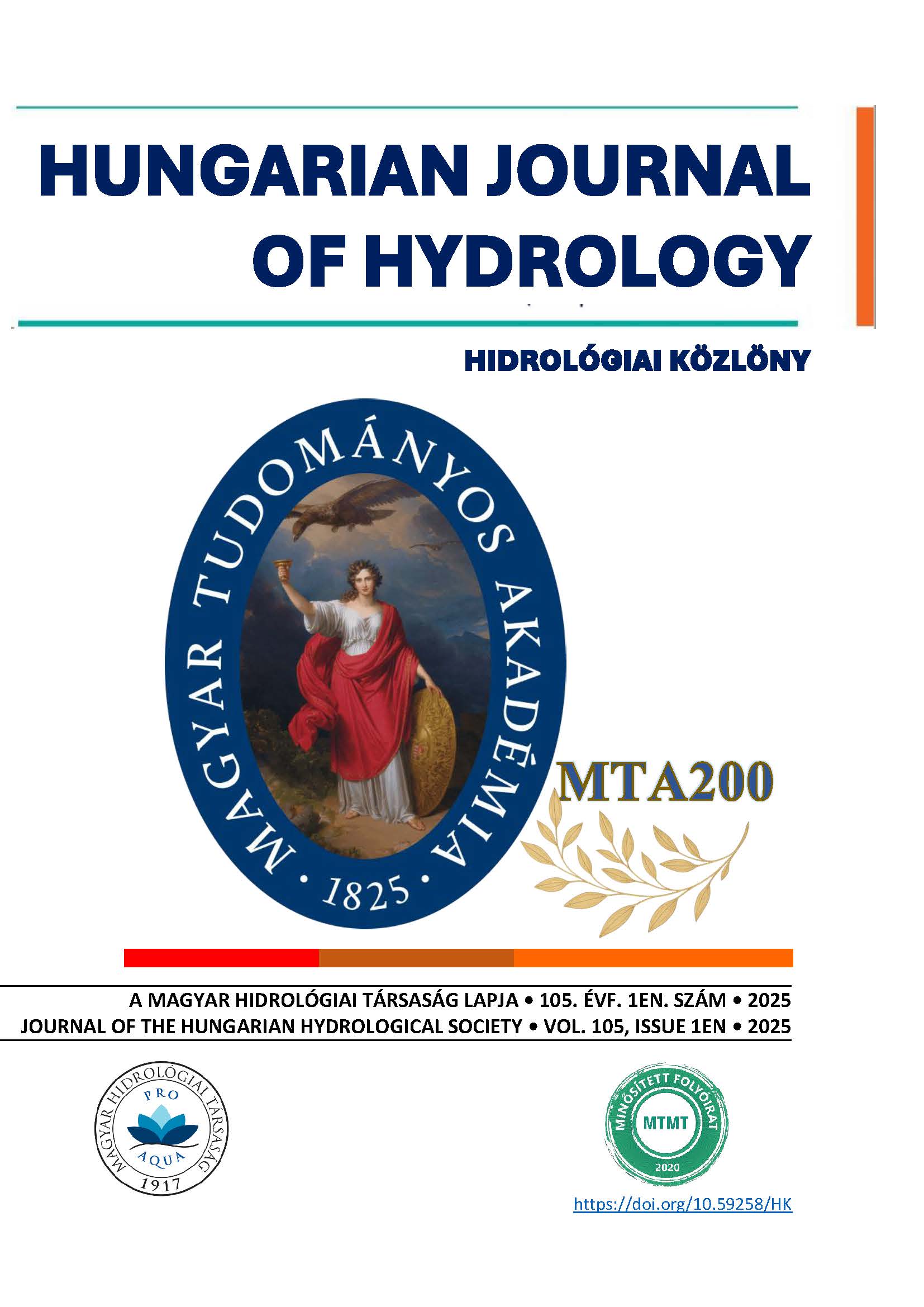A budai Várbarlang csepegővizeinek mennyiségi mérése klasszikus és modern mérési módszerekkel
Absztrakt
A budai Várhegy alatt húzódó Várbarlang állagmegőrzése szempontjából fontos a barlangi vizek vizsgálata. A kutatás fő céljai a csepegővíz mennyiségi mérése és a korábbi megfigyelésekhez képest bekövetkezett változások feltárása voltak. A célok közé tartozott továbbá a csepegővíz mérési helyek, valamint a csepegővíz- és csapadékadatok közötti kapcsolat vizsgálata. A méréseket saját készítésű billenőedényes mérőműszerekkel és ad hoc helyszíni mérésekkel végeztük. Korrelációvizsgálatot hajtottunk végre a két helyszínen mért csepegővíz értékeken és a csepegővíz és csapadék idősorokon. Az éves csepegővízmennyiségeket kiszámítottuk, és az eredményeket összehasonlítottuk a korábbi mérésekkel. Az eredmények azt mutatták, hogy a két csepegőhely közt erős, azonban a csapadékkal csak gyenge lineáris kapcsolat van. Az éves csepegővízmennyiség a korábbi adatokhoz képest a vizsgált időszak alapján valószínűleg nőtt. A barlangi vizek eredetének megállapításához további kutatások szükségesek hosszabb mérési adatokkal és vízkémiai vizsgálatokkal.
Hivatkozások
Hajnal G. (2003). A budai Várhegy hidrogeológiája (in Hungarian). Budapest, Akadémiai Kiadó.
Hajnal G. (2005). New method of calculating water balance for the Castle Hill, Buda. Acta Geologica Hungaricana, 45 (4), pp. 385-402. https://doi.org/10.1556/ageol.45.2002.4.5
Hajnal G., Farkas D. (2011). Hydrogeologische Untersuchungen des Höhlensystems der Budaer Burg (in German). Beiträge Zur Hydrogeologie, 58, pp. 27-52.
Horusitzky H. (1938). Budapest Dunajobbparti részének geológiai viszonyai (in Hungarian and German). Hidrológiai Közlöny, 18, pp. 1-404.
HungaroMet Nonprofit Zrt. (2024). Meteorológiai Adattár. https://odp.met.hu (Download date: 8th October 2024)
Kadič, O. (1942). A budavári barlangpincék, a várhegyi barlang és a Barlangtani Gyűjtemény ismertetése (in Hungarian). BARLANGVILÁG, XII. (3-4), pp. 49-75.
Kessler H. (1971). A budai Várbarlangban végzett hidrológiai mérések értékelése (manuscript, in Hungarian). FŐMTERV 30.891.
Krolopp E., Schweizer F., Scheuer Gy., Dénes Gy. (1976). A budai Várhegy negyedkori képződményei (in Hungarian). Bull. of the Hungarian Geol. Soc., 106 (3), pp. 193-228.
Nagy J.B. (2021). Hidrológiai vizsgálatok a Molnár János-barlangban (BSc thesis, in Hungarian). Budapest University of Technology and Economics, Budapest.
Rétiné Z.J. (1994). Pince veszélyelhárítás a budai Várban az 1880-1890-es években. Levéltári kutatás (maunscript, in Hungarian).
Scheuer Gy. (1986). A budai Vár-barlang geológiai vizsgálata, geológiai állapotfelvétel (manuscript, in Hungarian). Budapest.
Szontagh T. (1908). A budai várhegyi Alagút hidrogeológiai viszonyai - Jelentés a Várhegyi Alagút vizesedésének okairól (in Hungarian) (p. 23). Budapest.
Tóth D. (2016). A Molnár János-barlang térségének hidrológiai vizsgálata (MSc thesis, in Hungarian). Budapesti Műszaki és Gazdaságtudományi Egyetem, Budapest.
Copyright (c) 2025 Fanni Gazda, Dávid Farkas, Géza Hajnal

This work is licensed under a Creative Commons Attribution-NonCommercial-ShareAlike 4.0 International License.




